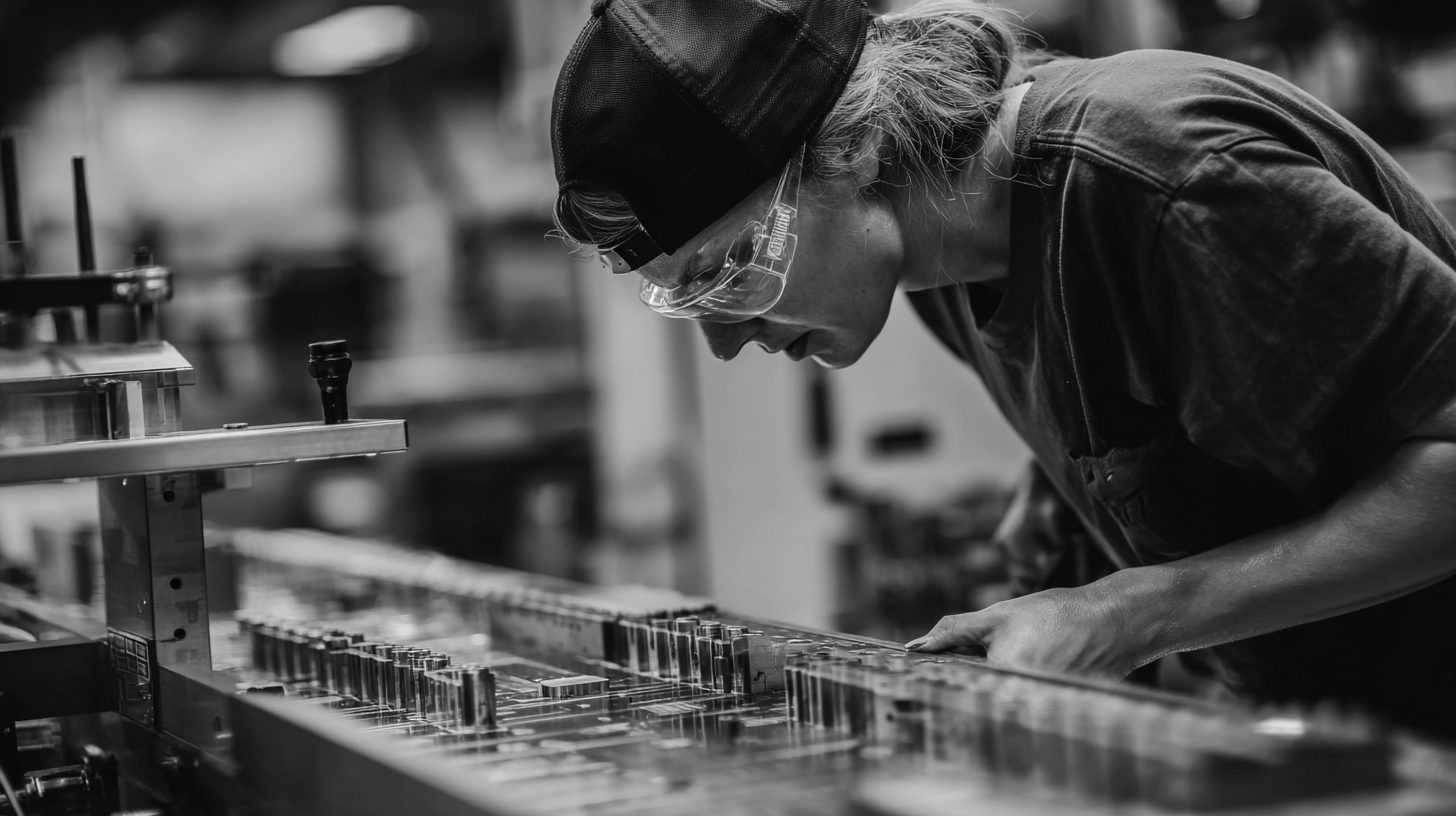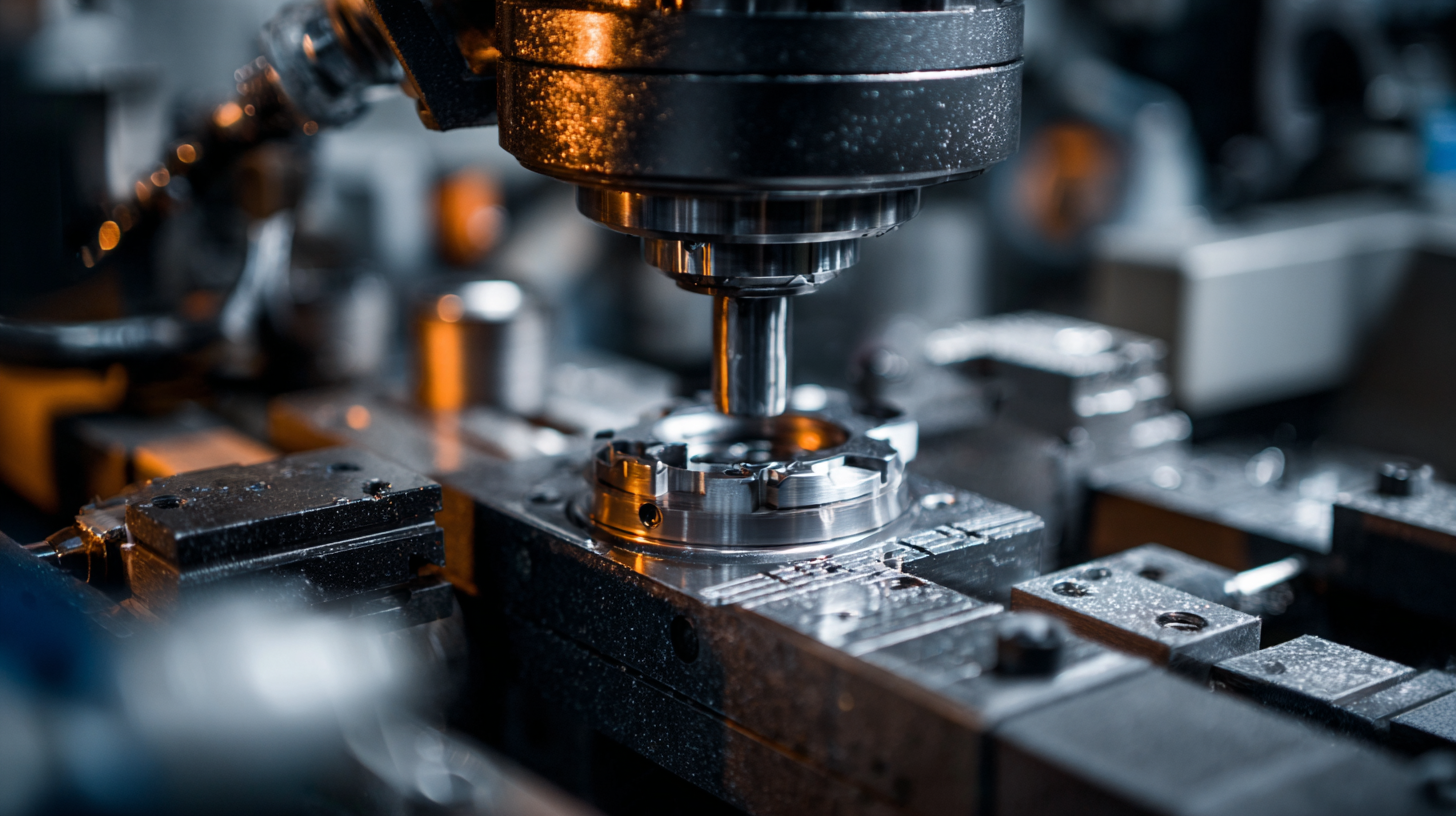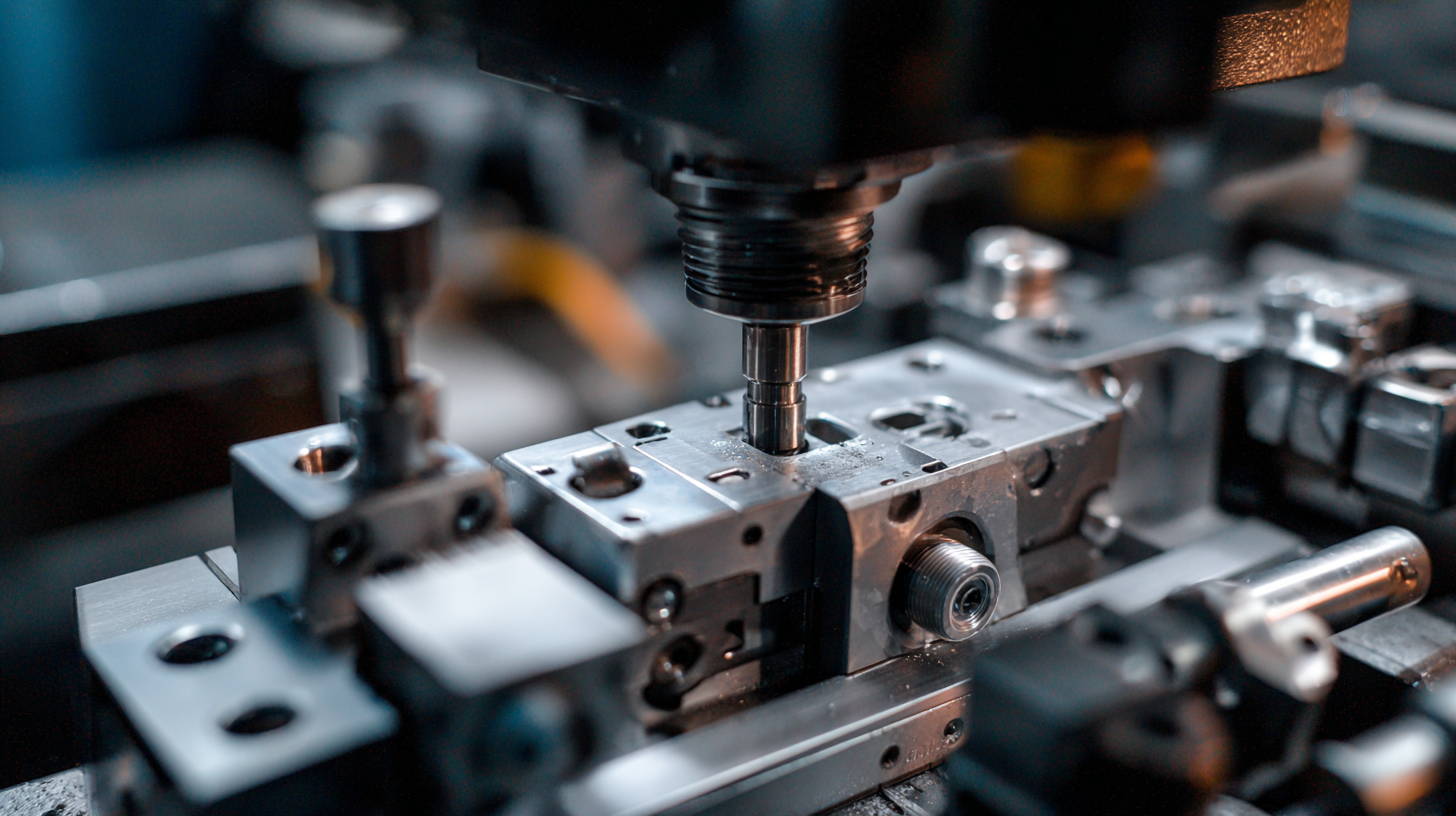The Ultimate Guide to Mastering Precision Molding Techniques
In today's rapidly evolving manufacturing landscape, precision molding has emerged as a crucial technique for achieving high-quality production standards. According to a recent report by MarketsandMarkets, the global precision molding market is projected to reach $28.4 billion by 2025, growing at a CAGR of 6.5%. This growth is driven by the increasing demand for precise, accurate components in sectors such as automotive, aerospace, and consumer electronics. As industries continue to pursue more intricate designs while maintaining efficiency, mastering precision molding techniques has never been more essential.

This comprehensive guide will delve into the best practices and innovative strategies that can help manufacturers enhance their molding processes, reduce waste, and achieve optimal production outcomes, ultimately securing their competitive advantage in the market.
Understanding the Basics of Precision Molding: Key Concepts Explained
Precision molding is a critical technique in various manufacturing sectors, particularly in producing intricate parts with tight tolerances. The process involves creating molds with precision-engineered dimensions, which holds immense importance in industries such as automotive, aerospace, and medical device manufacturing. According to a report by MarketsandMarkets, the global precision molding market is projected to reach USD 24.5 billion by 2025, showcasing a compound annual growth rate (CAGR) of 5.2%. Understanding the fundamentals of precision molding helps manufacturers optimize their production processes, improve product quality, and reduce waste.
One key concept in precision molding is the selection of appropriate materials. Plastics, metals, and composites each have unique properties that affect how they flow into molds and solidify. For instance, the choice of thermoplastics can enhance the final product's durability and flexibility. Additionally, maintaining optimal temperature and pressure during the molding process is crucial to achieve consistent results.
**Tips**: Always analyze the mechanical properties of the raw materials to ensure compatibility with the intended application. Regularly calibrate your molding machines to maintain precise control over temperature and pressure settings. Implementing effective mold maintenance practices can significantly prolong tool life and reduce downtime in production.
Incorporating advanced technologies such as computer-aided design (CAD) can streamline the design phase and allow for more intricate mold geometries. Real-time monitoring and feedback systems can also enhance the production process, ensuring that any anomalies are detected and corrected immediately, thus minimizing potential defects and maximizing efficiency.
The Ultimate Guide to Mastering Precision Molding Techniques
| Technique | Description | Applications | Advantages | Limitations |
|---|---|---|---|---|
| Injection Molding | A process of creating parts by injecting molten material into a mold. | Consumer products, automotive parts, and medical devices. | High production rates and ability to create complex shapes. | High initial tooling costs and limited to thermoplastic and thermosetting materials. |
| Blow Molding | A manufacturing process for forming hollow plastic parts. | Bottles and containers. | Efficient for high-volume production of lightweight products. | Limited to hollow shapes and requires specific materials. |
| Compression Molding | A process where materials are pressed into a mold cavity to form parts. | Automotive parts, electrical components, and various industrial applications. | Cost-effective for low-volume production and good for thick parts. | Slower cycle times and limited to certain materials. |
| Thermoforming | A process where plastic sheets are heated and shaped over a mold. | Packaging, automotive interiors, and medical trays. | Quick setup and efficient for large parts. | Limited detail reproduction and usually requires secondary operations. |
Top 5 Precision Molding Techniques for Flawless Results
Precision molding is an essential technique in manufacturing, ensuring that products meet stringent specifications and quality standards. Among the various methods available, five standout techniques promise flawless results. First, injection molding utilizes high-pressure systems to inject molten material into molds, producing intricate shapes with high precision. This method is widely favored for its ability to replicate complex designs consistently.
Next, rotational molding offers a unique approach for creating hollow objects. In this technique, powdered material is placed in a mold, which is then rotated in an oven. As the mold heats up, the material melts and coats the interior, forming even thickness throughout. This allows for excellent durability and uniformity in the final product. Additionally, blow molding, often used for making bottles and containers, combines air pressure and plastic expansion, ensuring lightweight yet strong products. Other notable techniques include compression molding, ideal for rubber and composite parts, and 3D molding, which leverages additive manufacturing for custom designs. Each of these methods brings its own set of benefits, making them invaluable to the world of precision molding.

7 Essential Tools Every Precision Molding Expert Should Have
Precision molding is a critical process in the manufacturing industry, enabling the production of high-quality components with exact specifications. For experts in this field, having the right tools is essential to achieve optimal results. According to a recent report by the International Association of Plastics Engineers, proper tooling can enhance production efficiency by up to 30%, highlighting the importance of investing in quality equipment.
Among the essential tools every precision molding expert should have, a high-precision injection molding machine tops the list. These machines offer advanced control over temperature and pressure, which are crucial for producing intricate designs. Additionally, precision molds made from durable materials like aluminum or steel ensure longevity and reduce maintenance costs. According to a survey conducted by MoldMaking Technology, 85% of professionals believe that high-quality molds directly correlate with improved product fidelity and reduced defect rates.
Another vital tool is a 3D scanner, which allows for meticulous inspection and verification of molded parts. With the growing trend toward automation, integrating robotic arms into the molding process can significantly decrease cycle times and boost productivity. A study from Technavio indicates that automated systems can result in a 20% decrease in production downtime, making them invaluable in high-demand environments. Emphasizing these tools not only enhances production capabilities but also fosters innovation in precision molding techniques.

Mastering Material Selection: 6 Factors to Consider for Precision Molding
When it comes to precision molding, material selection plays a pivotal role in achieving the desired results. First and foremost, understanding the intended application of the molded product is crucial. Different applications demand specific material properties, such as resistance to heat, chemicals, or mechanical stress. For instance, aerospace components require lightweight yet durable materials, while medical devices may necessitate biocompatible polymers. Thus, assessing the end-use is the first step in selecting the right material.
Another important factor to consider is the manufacturing process itself. Some materials behave differently under various molding conditions, including temperature and pressure. Compatibility with the chosen molding technology—such as injection molding or blow molding—can significantly affect the outcome. Additionally, the availability of materials and budget constraints should not be overlooked. It’s essential to balance performance with cost-effectiveness, ensuring that the selected material aligns with production capabilities. By meticulously evaluating these factors, manufacturers can achieve precision and reliability in their molding processes.
3 Common Mistakes in Precision Molding and How to Avoid Them
Precision molding is a critical process in manufacturing, yet many companies face challenges that can lead to costly errors. One of the most common mistakes is improper temperature control during the molding process. According to a report by the Society of Plastics Engineers, maintaining optimal temperature within ±5°C can significantly reduce material defects and improve cycle times. When temperatures fluctuate, the viscosity of the material changes, leading to inconsistent flow and poor part quality.
Another frequent issue arises from inadequate mold design. Research from the American Society of Mechanical Engineers indicates that up to 30% of production delays can be attributed to design flaws. Ensuring the mold is designed with proper venting and cooling channels can mitigate these delays and enhance overall efficiency. It's crucial for manufacturers to invest time in upfront design reviews to identify potential issues before production begins.
Finally, neglecting routine maintenance can drastically affect the precision and efficiency of molding operations. A survey by the Plastics Industry Association found that 40% of firms experience downtime due to equipment failure directly linked to neglecting maintenance protocols. Regular check-ups and timely repairs not only extend the life of the equipment but also maintain the integrity of the molding process, ensuring high-quality outputs consistently.
Related Posts
-

Unlocking Efficiency: The Key Benefits of Contract Injection Molding for Manufacturing Success
-

Ultimate Guide to Achieving High Molding Precision in Manufacturing
-

Understanding the Role of Precision Injection in Modern Manufacturing
-

5 Essential Tips to Maximize Efficiency in Injection Molding Processes
-

Maximizing Efficiency: Key Advantages of Injection Molding in Modern Manufacturing
-

Innovative Injection Molding Applications That Redefine Manufacturing Standards
